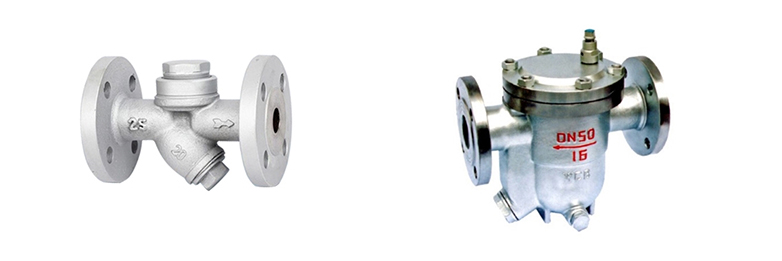What are the Types of Steam Traps?
Wed, Oct 25 by ATO.com
Steam traps are devices used in industrial settings to remove condensate (water) and non-condensable gases from steam systems while preventing the escape of live steam. There are several types of steam traps, each with its own working principle and application. Here are the main types of steam traps:
Float & Thermostatic Steam Traps
- Characteristics: These traps are versatile and adaptable. They excel in applications with variable condensate loads, providing consistent performance.
- Working Principle: Float & thermostatic traps use a float mechanism to respond to condensate levels and a thermostatic element to regulate steam discharge. The float rises with condensate, opening the valve, and the thermostatic element controls steam discharge based on temperature.
- Typical Applications: Ideal for heating systems, process heating, and industrial processes where condensate loads fluctuate, making them a dependable choice for dynamic environments.

Inverted Bucket Steam Traps
- Characteristics: Renowned for their durability, inverted bucket traps can handle high condensate loads and are built to withstand harsh industrial conditions.
- Working Principle: These traps feature an inverted bucket that floats on the condensate. When condensate accumulates, the bucket rises, opening the valve for condensate discharge. Conversely, when steam enters, the bucket sinks, closing the valve.
- Typical Applications: Inverted bucket traps are commonly utilized in steam mains, process equipment, and steam tracing applications, particularly in scenarios where robustness and reliability are paramount.
Thermodynamic Steam Traps
- Characteristics: Known for their compact design and minimal maintenance requirements, thermodynamic traps are well-suited for high-pressure settings.
- Working Principle: These traps rely on the dynamic effect of steam flow. When condensate or air enters, it causes a pressure drop, enabling the trap's valve to open for condensate removal.
- Typical Applications: Thermodynamic traps find their place in applications with variable loads, including steam mains, heat exchangers, and high-pressure steam systems, offering efficiency and reliability.
Thermic Steam Traps
- Characteristics: Highly efficient and dependable, thermic traps are favored in low-pressure environments. Their simplicity, lack of moving parts, and longevity make them a valuable choice.
- Working Principle: These traps respond to temperature differences between steam and condensate. When condensate cools, it contracts, allowing the trap to open and discharge condensate.
- Typical Applications: Commonly found in low-pressure systems like steam heating and HVAC systems, where steady condensate removal is essential.
Thermostatic Steam Traps
- Characteristics: Thermostatic traps offer precise control over condensate discharge and work effectively in applications with varying loads.
- Working Principle: These traps feature a temperature-sensitive element that expands and contracts with temperature changes. When condensate cools the element, it contracts, leading to trap opening and condensate discharge.
- Typical Applications: Thermostatic traps are well-suited for applications requiring precise temperature control, such as sterilizers, laboratories, and specialized industrial processes.
Venturi Nozzle Steam Traps
- Characteristics: Venturi traps are straightforward and reliable due to their absence of moving parts. They excel in handling high-pressure drops.
- Working Principle: By utilizing a Venturi nozzle, these traps create a pressure drop when steam enters, facilitating condensate discharge.
- Typical Applications: Venturi traps are commonly used in high-pressure steam systems, superheated steam applications, and situations where substantial capacity for condensate discharge is required.
Orifice Steam Traps
- Characteristics: Orifice traps are cost-effective and straightforward, making them suitable for low-capacity scenarios.
- Working Principle: Orifice traps employ a small orifice to restrict condensate flow. When steam enters, the orifice remains open, while condensate accumulates and eventually blocks it, enabling condensate discharge.
- Typical Applications: Orifice traps are frequently employed in low-capacity steam lines, steam tracing systems, and small-scale process equipment.
Bi-Metallic Steam Traps
- Characteristics: Bi-metallic traps are known for their reliability and adaptability to variable loads. They are robust and have an extended service life.
- Working Principle: These traps rely on the differential expansion of two metals with different coefficients of thermal expansion. As temperatures change, the metals expand or contract, causing the trap valve to open or close.
- Typical Applications: Bi-metallic traps find their application in systems with fluctuating loads, such as process heating, steam mains, and diverse industrial processes.
Each type of steam trap has its unique advantages and is suited to specific industrial applications based on factors like pressure, temperature, and condensate load. Proper selection ensures efficient condensate removal and energy savings. ATO store offers a variety of types of hydrophobic valves, welcome to choose and purchase.

